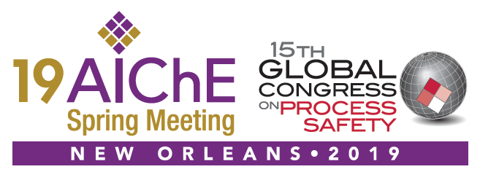

Industry generally understands that human factors issues are important to safety (process safety and facility safety). However, there is a lack of a universally accepted approach to addressing human factors. This presentation will address several issues regarding human factors as they relate to operations and risk assessments in today’s culture and how human factors should play a role. Included in the discussion are human factors: what they are, why they should be addressed and what can be done to minimize the effects of the human element.
There is a common assumption in industry that human factors account for a majority of accidents. Is this true? What are Human Factors? There are processes and elements within a facility that can be directly affected by human interaction and this interaction must be considered when looking at the risk associated with a process or piece of equipment. Human factors can also play a role in your Process Safety and need to be included in covered and non-covered processes alike. Many facilities address human factors in audits but applying the concept to developing processes is not as universally performed. In order to address Human Factors a truly comprehensive approach is necessary that includes but is not limited to procedures, training, equipment and controls layout, etc.
Traditionally, risk assessments, whether it be JSAs, QRAs, PHAs or any version there-in, focus on the equipment and what the hazards are that are associated with that equipment or process. It is a very 2-dimensional assessment. The probability of an event is determined and the severity. Often, the only time the human presence is considered is during the assessment of severity. However, the human interaction piece should not be ignored. This may include the operator, but it may also reflect on the management of the crew, the area or the facility. For example, are operators routinely asked to work extra, doubles or more than their assigned tasks? Are the procedures sufficient to understand and operate the equipment and are they utilized? Is the training sufficient to ensure an understanding of the process, the procedures and the hazards? While these are not the generally the final cause of an accident or event they can very well lead the facility toward an accident or event. An operator opened the wrong valve and started a chain reaction that caused an explosion. Was the operator to blame? Many investigations will stop there and say yes. But there are other factors that affect how that operator did his job including procedures, training, facility markings, and others.
In this presentation we will review:
What are human factors and what can influence them?
The following directly affects the human reaction to a given situation -
Poor or inefficient communications, distractions, stress, complacency, pressure, fatigue, norms, lack of teamwork, resources, awareness, assertiveness or knowledge.
Human (employee) reaction to a given situation can be guided by:
Hiring principles, training, procedures, mentoring, accessibility to controls and ease of understanding controls, feedback devices and layouts, and ownership.
What human factors need to be considered when performing a risk assessment?
JSA style assessments – risks associated with equipment and processes
PHA style assessments – risks associated with covered processes
What can be done to account for factors like fatigue, complacency, communications, etc?
Also discussed will be how to incorporate human factors into risk assessments as well as how to sell this change in assessments to management.
Presenter(s)
Language
Pricing
Individuals
| AIChE Member Credits | 0.5 |
| AIChE Pro Members | $19.00 |
| Employees of CCPS Member Companies | Free |
| AIChE Graduate Student Members | Free |
| AIChE Undergraduate Student Members | Free |
| AIChE Explorer Members | $29.00 |
| Non-Members | $29.00 |
